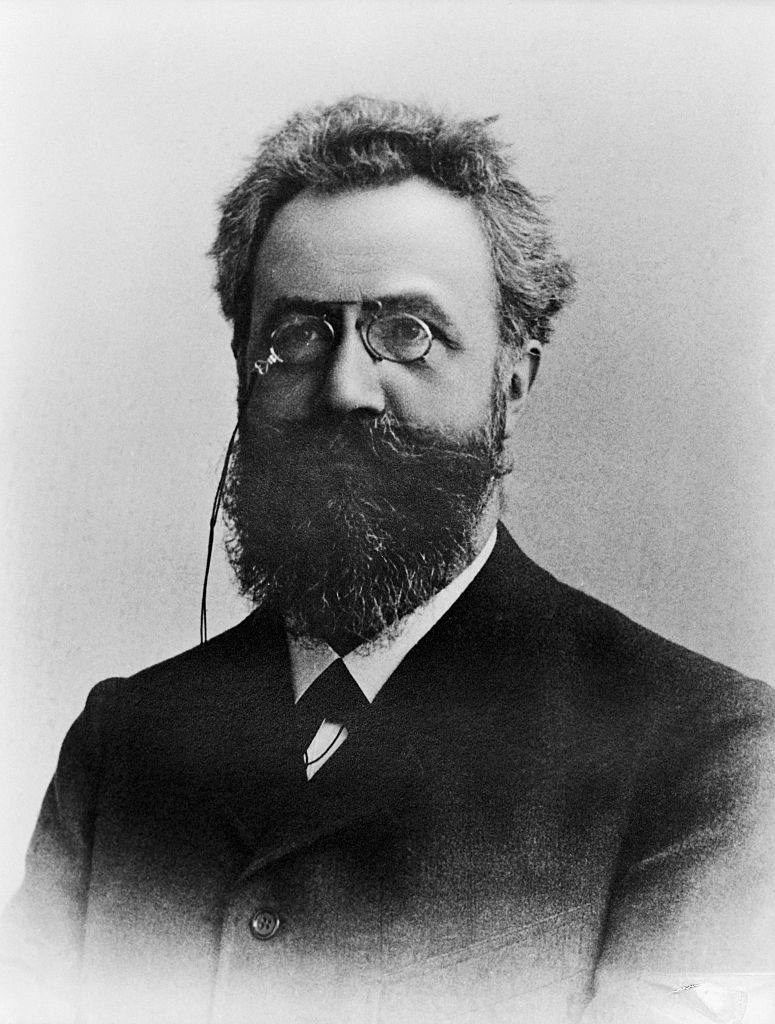|
Explanation-based Learning
Explanation-based learning (EBL) is a form of machine learning that exploits a very strong, or even perfect, domain theory (i.e. a formal theory of an application domain akin to a domain model in ontology engineering, not to be confused with Scott's domain theory) in order to make generalizations or form concepts from training examples. It is also linked with Encoding (memory) to help with Learning. Details An example of EBL using a perfect domain theory is a program that learns to play chess through example. A specific chess position that contains an important feature such as "Forced loss of black queen in two moves" includes many irrelevant features, such as the specific scattering of pawns on the board. EBL can take a single training example and determine what are the relevant features in order to form a generalization. A domain theory is ''perfect'' or ''complete'' if it contains, in principle, all information needed to decide any question about the domain. For example, the ... [...More Info...] [...Related Items...] OR: [Wikipedia] [Google] [Baidu] |
Machine Learning
Machine learning (ML) is a field of study in artificial intelligence concerned with the development and study of Computational statistics, statistical algorithms that can learn from data and generalise to unseen data, and thus perform Task (computing), tasks without explicit Machine code, instructions. Within a subdiscipline in machine learning, advances in the field of deep learning have allowed Neural network (machine learning), neural networks, a class of statistical algorithms, to surpass many previous machine learning approaches in performance. ML finds application in many fields, including natural language processing, computer vision, speech recognition, email filtering, agriculture, and medicine. The application of ML to business problems is known as predictive analytics. Statistics and mathematical optimisation (mathematical programming) methods comprise the foundations of machine learning. Data mining is a related field of study, focusing on exploratory data analysi ... [...More Info...] [...Related Items...] OR: [Wikipedia] [Google] [Baidu] |
Domain (software Engineering)
In software engineering, domain is the targeted subject area of a computer program. Formally it represents the target subject of a specific programming project, whether narrowly or broadly defined. For example, for a particular programming project that has as a goal of the creation of a program for a particular hospital, that hospital would be the domain. Or, the project can be expanded in scope to include hospitals as its domain. In a computer programming design, one defines a domain by delineating a set of common requirements, terminology, and functionality for any software program constructed to solve a problem in the area of computer programming, known as '' domain engineering''. The word "domain" is also taken as a synonym of ''application domain''. Domain in the realm of software engineering commonly refers to the subject area on which the application is intended to apply. In other words, during application development, the domain is the "sphere of knowledge and activity ar ... [...More Info...] [...Related Items...] OR: [Wikipedia] [Google] [Baidu] |
Domain Model
In software engineering, a domain model is a conceptual model of the domain (software engineering), domain that incorporates both behavior and data.Fowler, Martin. "P of EAA - Domain Model"/ref> In ontology engineering, a domain model is a Knowledge representation and reasoning, formal representation of a knowledge domain with concepts, roles, datatypes, individuals, and rules, typically grounded in a description logic. Overview In the field of computer science a conceptual model aims to express the meaning of terms and concepts used by domain experts to discuss the problem, and to find the correct relationships between different concepts. The conceptual model is explicitly chosen to be independent of design or implementation concerns, for example, concurrency or data storage. Conceptual modeling in computer science should not be confused with other modeling disciplines within the broader field of conceptual models such as data modelling, logical modelling and physical modellin ... [...More Info...] [...Related Items...] OR: [Wikipedia] [Google] [Baidu] |
Ontology Engineering
In computer science, information science and systems engineering, ontology engineering is a field which studies the methods and methodologies for building Ontology (information science), ontologies, which encompasses a representation, formal naming and definition of the categories, properties and relations between the concepts, data and entities of a given domain of interest. In a broader sense, this field also includes a knowledge construction of the domain using formal ontology representations such as OWL/RDF. A large-scale representation of abstract concepts such as actions, time, physical objects and beliefs would be an example of ontological engineering. Ontology engineering is one of the areas of applied ontology, and can be seen as an application of Ontology, philosophical ontology. Core ideas and objectives of ontology engineering are also central in Conceptual model (computer science), conceptual modeling. Automated processing of information not interpretable by software ... [...More Info...] [...Related Items...] OR: [Wikipedia] [Google] [Baidu] |
Domain Theory
Domain theory is a branch of mathematics that studies special kinds of partially ordered sets (posets) commonly called domains. Consequently, domain theory can be considered as a branch of order theory. The field has major applications in computer science, where it is used to specify denotational semantics, especially for functional programming languages. Domain theory formalizes the intuitive ideas of approximation and convergence in a very general way and is closely related to topology. Motivation and intuition The primary motivation for the study of domains, which was initiated by Dana Scott in the late 1960s, was the search for a denotational semantics of the lambda calculus. In this formalism, one considers "functions" specified by certain terms in the language. In a purely syntactic way, one can go from simple functions to functions that take other functions as their input arguments. Using again just the syntactic transformations available in this formalism, one can obtai ... [...More Info...] [...Related Items...] OR: [Wikipedia] [Google] [Baidu] |
Encoding (memory)
Memory has the ability to encode, Storage (memory), store and Recall (memory), recall information. Memories give an organism the capability to learn and adapt from previous experiences as well as build relationships. Encoding allows a perceived item of use or interest to be converted into a construct that can be stored within the brain and recalled later from long-term memory. Working memory stores information for immediate use or manipulation, which is aided through hooking onto previously archived items already present in the long-term memory of an individual. History Encoding is still relatively new and unexplored but the origins of encoding date back to age-old philosophers such as Aristotle and Plato. A major figure in the history of encoding is Hermann Ebbinghaus (1850–1909). Ebbinghaus was a pioneer in the field of memory research. Using himself as a subject he studied how we learn and forget information by repeating a list of nonsense syllables to the rhythm of a metron ... [...More Info...] [...Related Items...] OR: [Wikipedia] [Google] [Baidu] |
Learning
Learning is the process of acquiring new understanding, knowledge, behaviors, skills, value (personal and cultural), values, Attitude (psychology), attitudes, and preferences. The ability to learn is possessed by humans, non-human animals, and some machine learning, machines; there is also evidence for some kind of learning in certain plants. Some learning is immediate, induced by a single event (e.g. being burned by a Heat, hot stove), but much skill and knowledge accumulate from repeated experiences. The changes induced by learning often last a lifetime, and it is hard to distinguish learned material that seems to be "lost" from that which cannot be retrieved. Human learning starts at birth (it might even start before) and continues until death as a consequence of ongoing interactions between people and their environment. The nature and processes involved in learning are studied in many established fields (including educational psychology, neuropsychology, experimental psycho ... [...More Info...] [...Related Items...] OR: [Wikipedia] [Google] [Baidu] |
Chess
Chess is a board game for two players. It is an abstract strategy game that involves Perfect information, no hidden information and no elements of game of chance, chance. It is played on a square chessboard, board consisting of 64 squares arranged in an 8×8 grid. The players, referred to as White and Black in chess, "White" and "Black", each control sixteen Chess piece, pieces: one king (chess), king, one queen (chess), queen, two rook (chess), rooks, two bishop (chess), bishops, two knight (chess), knights, and eight pawn (chess), pawns, with each type of piece having a different pattern of movement. An enemy piece may be captured (removed from the board) by moving one's own piece onto the square it occupies. The object of the game is to "checkmate" (threaten with inescapable capture) the enemy king. There are also several ways a game can end in a draw (chess), draw. The recorded history of chess goes back to at least the emergence of chaturanga—also thought to be an ancesto ... [...More Info...] [...Related Items...] OR: [Wikipedia] [Google] [Baidu] |
Combinatoric Explosion
In mathematics, a combinatorial explosion is the rapid growth of the complexity of a problem due to the way its combinatorics depends on input, constraints and bounds. Combinatorial explosion is sometimes used to justify the intractability of certain problems.http://intelligence.worldofcomputing/combinatorial-explosion Combinatorial Explosion. Examples of such problems include certain mathematical functions, the analysis of some puzzles and games, and some pathological examples which can be modelled as the |
Mathematical Proof
A mathematical proof is a deductive reasoning, deductive Argument-deduction-proof distinctions, argument for a Proposition, mathematical statement, showing that the stated assumptions logically guarantee the conclusion. The argument may use other previously established statements, such as theorems; but every proof can, in principle, be constructed using only certain basic or original assumptions known as axioms, along with the accepted rules of inference. Proofs are examples of exhaustive deductive reasoning that establish logical certainty, to be distinguished from empirical evidence, empirical arguments or non-exhaustive inductive reasoning that establish "reasonable expectation". Presenting many cases in which the statement holds is not enough for a proof, which must demonstrate that the statement is true in ''all'' possible cases. A proposition that has not been proved but is believed to be true is known as a conjecture, or a hypothesis if frequently used as an assumption for ... [...More Info...] [...Related Items...] OR: [Wikipedia] [Google] [Baidu] |
Treebank
In linguistics, a treebank is a parsed text corpus that annotates syntactic or semantic sentence structure. The construction of parsed corpora in the early 1990s revolutionized computational linguistics, which benefitted from large-scale empirical data. Etymology The term ''treebank'' was coined by linguist Geoffrey Leech in the 1980s, by analogy to other repositories such as a seedbank or bloodbank. This is because both syntactic and semantic structure are commonly represented compositionally as a tree structure. The term ''parsed corpus'' is often used interchangeably with the term treebank, with the emphasis on the primacy of sentences rather than trees. Construction Treebanks are often created on top of a corpus that has already been annotated with part-of-speech tags. In turn, treebanks are sometimes enhanced with semantic or other linguistic information. Treebanks can be created completely manually, where linguists annotate each sentence with syntactic structur ... [...More Info...] [...Related Items...] OR: [Wikipedia] [Google] [Baidu] |
Speech Recognition
Speech recognition is an interdisciplinary subfield of computer science and computational linguistics that develops methodologies and technologies that enable the recognition and translation of spoken language into text by computers. It is also known as automatic speech recognition (ASR), computer speech recognition or speech-to-text (STT). It incorporates knowledge and research in the computer science, linguistics and computer engineering fields. The reverse process is speech synthesis. Some speech recognition systems require "training" (also called "enrollment") where an individual speaker reads text or isolated vocabulary into the system. The system analyzes the person's specific voice and uses it to fine-tune the recognition of that person's speech, resulting in increased accuracy. Systems that do not use training are called "speaker-independent" systems. Systems that use training are called "speaker dependent". Speech recognition applications include voice user interfaces ... [...More Info...] [...Related Items...] OR: [Wikipedia] [Google] [Baidu] |






